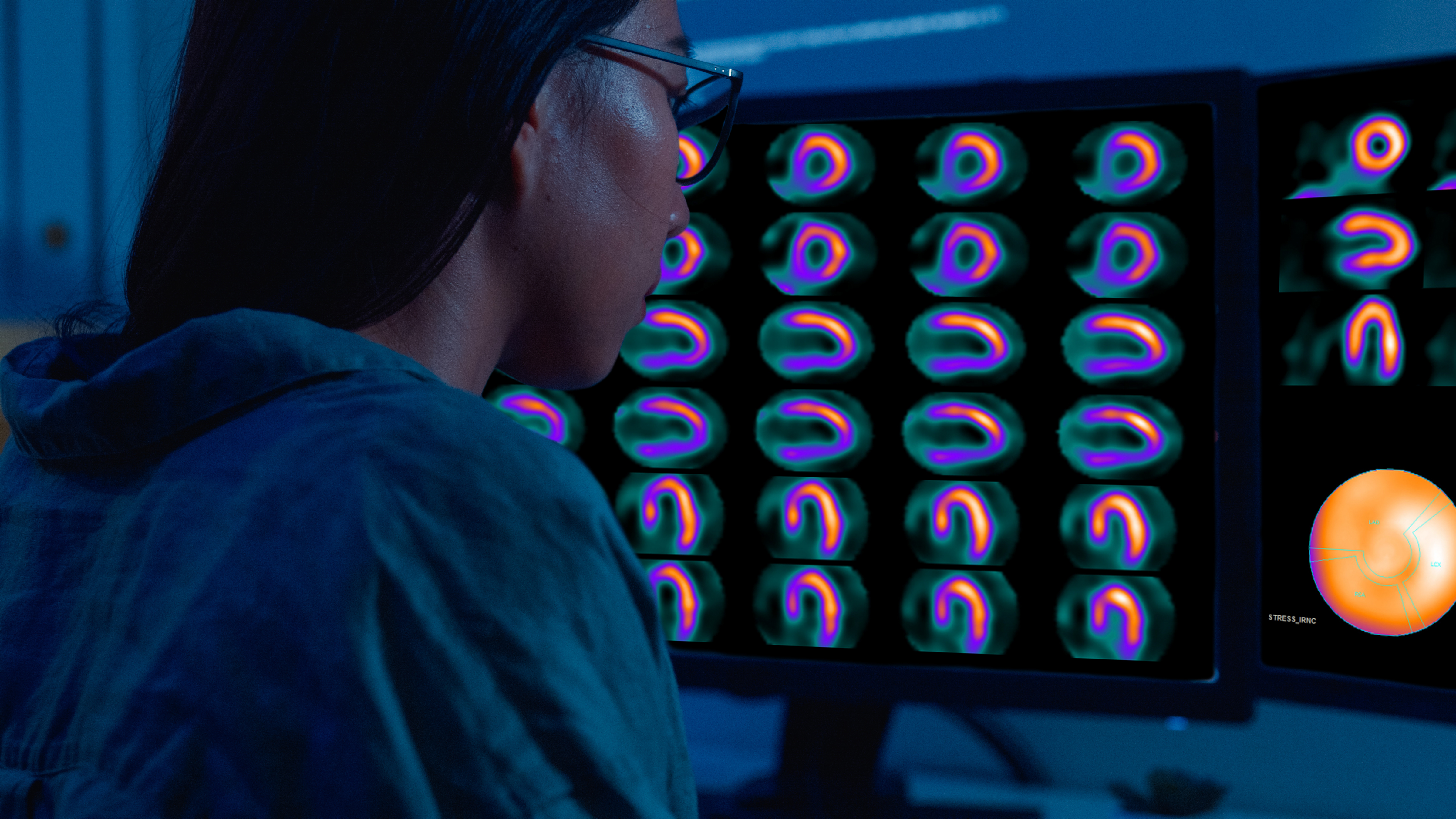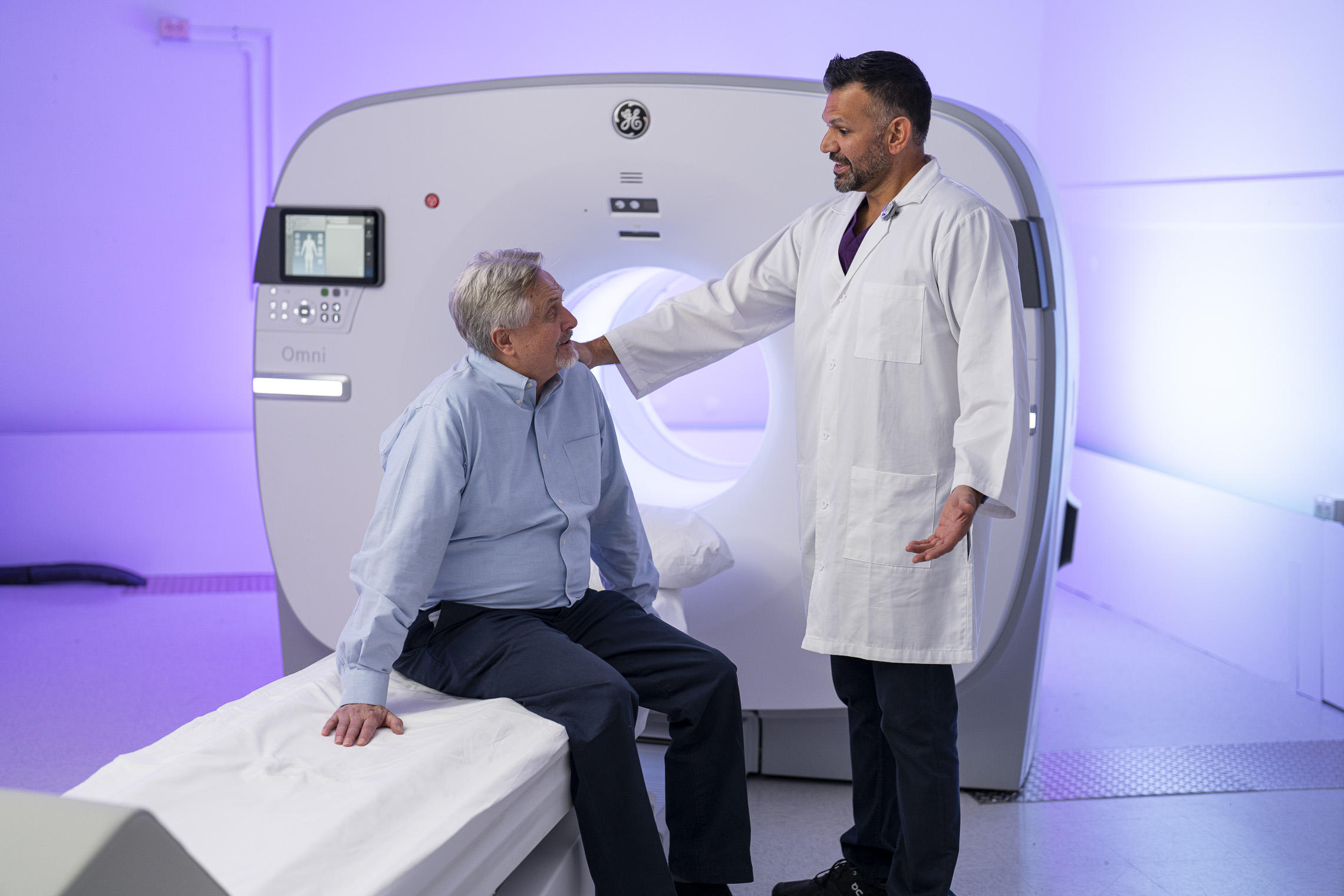As the global population ages, the prevalence of neurological conditions, cardiovascular diseases (CVDs) and cancer is increasing, as is the mortality rate for CVDs, while dementia and other neurological issues result in more disability than any other medical problems, according to the World Health Organization (WHO). The number of people living with dementia is expected to almost double every 20 years, while more than half a billion people around the world continue to be affected by CVDs. By 2040, the burden from breast cancer alone is predicted to increase to more than three million new cases and a million deaths annually.
All this means that finding ways to diagnose these conditions — and treat them — is more important than ever. Novel radiotracers, diagnostic radiopharmaceuticals used with positron emission tomography (PET) imaging, are increasingly helping clinicians do just that. For example, the Imaging Dementia–Evidence for Amyloid Scanning (IDEAS) study showed that, following an amyloid PET scan, more than 60% of dementia patients received a change in management and over one-third received a change in diagnosis.
The importance of positron emission tomography
PET is a non-invasive imaging procedure that is particularly useful for precision diagnostics, as well as monitoring disease progression and treatment effectiveness. Using a radiotracer — which combines a diagnostic molecule with a radioisotope like fluorine-18 — PET scans provide precise information about the location or characterization of disease, which in turn can impact patient diagnosis and management.
F18-labeled radiotracers — due to the 109-minute half-life of F18 — can offer practical advantages, including the ability for doses to be delivered to imaging centers some distance from a radiopharmacy rather than needing to be produced on-site. In general, PET scans can lead to faster and more accurate diagnoses, greater precision in treatment monitoring and, as a result, the potential to avoid ineffective therapies and unnecessary invasive procedures.
“The advent of new PET tracers, labeled with F18 in particular, can really push the boundaries in both expanding access and improving convenience for clinicians and their patients,” says Mouaz Al-Mallah, MD, MSc, MASNC, immediate past president of the American Society of Nuclear Cardiology (ASNC) and director of cardiac PET at Houston Methodist Hospital in Texas. “We hope increased access to cardiac PET allows healthcare facilities to offer this modality to their patients and make the most of what PET has to offer them.”
PET imaging also is at the forefront of theranostics, a breakthrough approach that integrates imaging diagnostics and targeted therapeutics for individualized management and treatment of disease. PET tracers are used to image disease and deliver targeted therapies. The goal of theranostics is to treat cancer cells without harming healthy tissue.
Targeted therapies
Just ten years ago, the only way to confirm the presence of amyloid plaques in the brain — the hallmark of Alzheimer’s disease — was through a postmortem exam. Today, with PET amyloid imaging, radiologists can actually see amyloid in a living patient’s brain, sometimes even before symptoms appear, and help diagnose Alzheimer’s, the most common form of dementia. Conversely, if amyloid is not found in a dementia patient’s brain, doctors know they need to keep looking for other causes of cognitive decline.
“This is a really exciting time for Alzheimer’s, because there are new amyloid targeting therapies and they are enabling it to be removed from the brain,” says Anja Mett, global product leader for neurology at GE HealthCare. “With these therapies, it’s really important to first confirm that patients have amyloid in their brain. It’s fantastic to be part of that journey providing patients and clinicians with these exciting diagnostic options.”
With another F18-labeled tracer, patients with metastatic or recurrent breast cancer can receive a noninvasive, comprehensive assessment of the whole body with a PET scan. Systemic assessment of the patient’s body may aid in the diagnosis and also allow for more targeted, precise treatment of their breast cancer.
“When we can do smaller amounts of targeted systemic therapies, it benefits patients,” says Gary Ulaner, MD, PhD, director of molecular imaging and therapy at the Hoag Family Cancer Institute in Newport Beach, California.
As these benefits become better understood, it will be important to ensure that access is widely available to all patients — no matter who they are or where in the world they live. Currently, the cost-prohibitive nature of PET scans, due to lack of insurance coverage, and dispersed geographic availability of PET imaging centers can make it difficult for patients to access this critical precision diagnostic tool, leading to potentially life-threatening delays in diagnosis and treatment.
“Access and affordability are undeniable tenets that should never impede a patient in their healthcare journey. Ensuring access to PET scans using these precision diagnostics is critical for timely diagnosis and effective treatment, particularly in oncology, cardiology and neurology,” says Dina Inverso, U.S. leader for market access, reimbursement and policy at GE HealthCare. “We are poised to help combat challenges like limited availability and accessibility, along with potential logistical hurdles that can create significant barriers for healthcare providers. Addressing these issues is essential to ensuring the right patients get the right scans at the right time.”
Why the investment matters
Healthcare is undergoing a rapid change as more advanced therapies that treat disease or slow its progression come onto the market — offering the potential to significantly help patients. But there’s a risk that healthcare facilities could fall behind if they don’t invest in technology that can unlock those breakthroughs.
Healthcare facilities that do not use PET could end up with less accurate diagnoses, for example, for some cancers, as well as reduced precision in treatment and monitoring. Without access to PET capabilities, patients may not receive appropriate therapies, or may undergo unnecessary invasive procedures — like biopsies and surgical interventions. This may lead to longer wait times for both diagnosis and the initiation of an effective treatment. More accurate diagnoses and targeted treatment can potentially lead to significant cost savings for healthcare systems over time.
In a study earlier this year, the National Institutes of Health urged policymakers worldwide to assess their country’s risk factors and craft effective strategies for the prevention and management of CVDs and other illnesses. That means governments and health providers need to invest now, to save money in the future and, even more importantly, improve patient outcomes across neurology, cardiology and oncology. Increased PET access can help deliver on that hope.
In the United States, meeting future needs and increasing access to advanced medical diagnostics and treatment will be supported by implementation of changes from the Centers for Medicare and Medicaid Services (CMS) to ensure appropriate payment and increase reimbursements for radiopharmaceuticals in the hospital outpatient setting. Put succinctly, this is an important advancement for Medicare beneficiaries, as the change unbundles payments in this setting for radiopharmaceutical diagnostic imaging agents from nuclear medicine scans (PET and SPECT), thus removing a long-standing challenge on reimbursement to hospitals that disincentivized the use of these lifesaving scans. The changes, expected to go into effect on January 1, 2025, will ensure payments cover the necessary costs of testing for nuclear medicine procedures.
This positive step forward for patient access, hospitals, and the industry removes a long-standing challenge on appropriate reimbursement for radiopharmaceuticals. The CMS rule has the potential to benefit patients across care pathways, including those battling Alzheimer’s disease, Parkinson’s disease, cancer, and CVD. This progress toward making radiopharmaceuticals more accessible and less cost-prohibitive for clinicians and their patients, coupled with the growing availability of F18-labeled pharmaceuticals, underscores the importance of investing in PET now.
“By investing in PET imaging now, healthcare facilities and the wider society could potentially reduce costs, while improving outcomes in the future, across care pathways,” concludes Dr. Al-Mallah.


